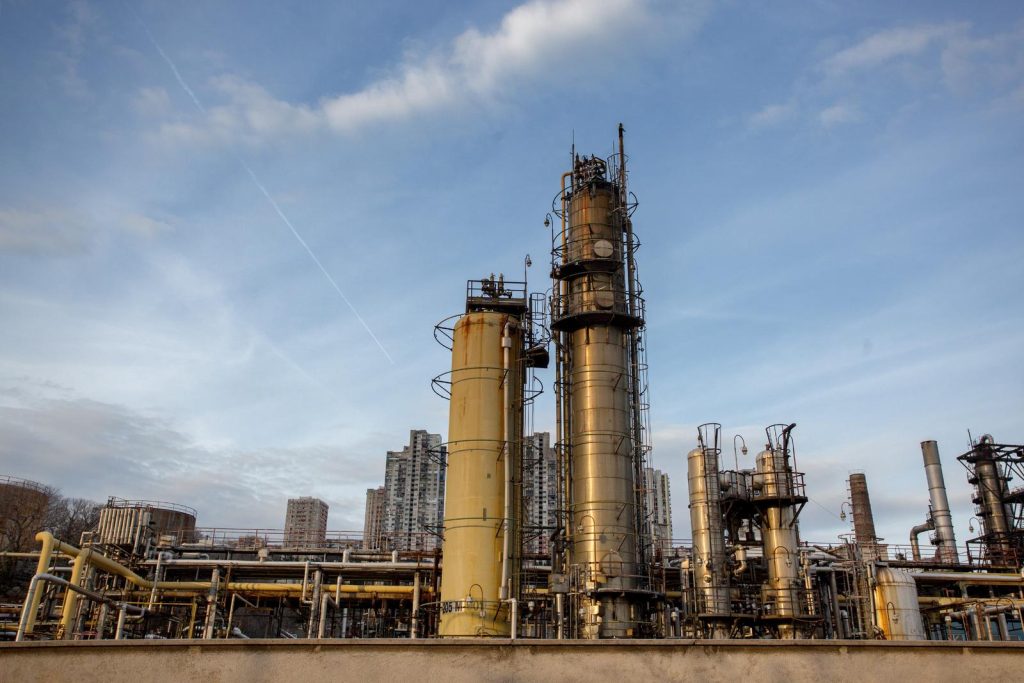April the 21st, 2024 – The Rijeka Refinery upgrade, initiated by an enormous cash injection of 630 million euros by INA, is the company’s biggest single investment in its history.
As Poslovni Dnevnik/Ivan Brodic writes, over the past week, Jadranski naftovod concluded a contract for the transportation and storage of oil with Hungary’s MOL.
That was the result of several months of negotiations between the two companies, which included tough negotiating positions and not entirely friendly communication via the media. Despite the turbulence, this is the contract that sealed the new energy role of Croatian infrastructure in Europe for the medium term.
All of this closely followed the change in the leasing paradigm at the terminal for liquefied gas on the island of Krk. A Croatian capacity lessee appeared at the terminal (Prvo plinarsko društvo). In partnership with no less than British Petroleum, the lessee leased the existing free capacities and announced the intention of further leases once the terminal doubles its capacities. It was already fairly clear that this point would become a key point for supplying this part of Europe with liquefied gas in the conditions of the new European geopolitical circumstances.
sanction exceptions
Despite the negotiated exceptions that the Hungarian and Slovakian negotiators negotiated for the land import of energy from Russia, it’s become quite clear that these exceptions to the sanctions, which the European administration introduced to Russia in order to prevent or slow down the financing of the war in Ukraine, are not only temporary, but also limited. These exceptions include the import of energy products for the bloc’s own needs, but not for the production of goods for export, such as petrochemical and refinery products.
The contract signed over recent days between Janaf and MOL is therefore completely understandable from the position of the Hungarian partners. The contract is for the transport of 2,200,000 tonnes of oil through the Croatian oil infrastructure system, as well as for the storage of that oil at the Omišalj and Sisak terminals. It is important not only for geopolitical reasons, but also for Croatian energy opportunities. In parallel with this contract, Janaf concluded a new contract with INA for the transport of oil for the needs of the Rijeka Refinery.
an overhaul for the rijeka refinery
It isn’t quite clear whether this is nothing more than strange coincidence or an indispensable part of the negotiating leverage of the Hungarian company. Let’s not forget that MOL is also a co-owner of INA. Following the completion of the overhaul in Rijeka and eight projects aimed at energy efficiency, we can see the gradual start-up of production in the Rijeka Refinery. It’s clear that after multiple hurdles, we’re now on the verge of transforming the Rijeka Refinery into something much more modern.
This phase of the Rijeka Refinery’s overall modernisation included cleaning the system, and inspecting and replacing the equipment, which was due to legal obligations. That was also carried out in order to enable the continuous operation of the refinery and stabilise the security of market supply. In addition, modernisation procedures were carried out in order to reduce the Rijeka Refinery’s carbon footprint.
It’s commendable that INA has managed to ensure a sufficient and stable market supply even during the planned overhaul. In addition to that, the fact that a modern refinery will operate in Croatia that will also process oil produced in Croatia, which will further strengthen Croatian energy security, as well as INA’s operations as one of the largest Croatian employers, is pleasing for taxpayers too.
At the very heart of current public attention is the largest single investment in the history of INA, the Rijeka Refinery upgrade project, worth more than 630 million euros. The importance of this huge project is to ensure the long-term sustainability of INA’s entire refining business, as well as the security of the supply of oil derivatives to the Croatian and regional markets.
For Janaf, this is a continuation of good and efficient operations, which resulted in an increase in revenue of almost 30 percent in 2023 compared to 2022. It’s meaningful that the year when Janaf celebrates its fiftieth anniversary, this company will effectively be continuing its infrastructure task and being a pillar of Croatian energy, as well as of the Croatian economy.
It is clearly continuing to build its stellar reputation and doing business with the most important energy companies, both in the more immediate region and globally. New investments in the expansion of storage capacities signal a bright future and the diversification of business operations.
croatian infrastructure pushed into the limelight
With the beginning of the shock Russian invasion of Ukraine and other geopolitical turmoil, such as events in the Middle East, Croatian infrastructure became one of the key for the supply of energy to this part of Europe. If there are also projects that could position Croatia as an important point in the European hydrogen infrastructure, that position will become even stronger.
Things have altered on a permanent basis as far as energy supply is concerned. Even if the geopolitical instability de-escalates within a reasonable time frame, it’s doubtful that the European Union and its transatlantic allies will ever again allow themselves to be dependent on energy sources from countries that, at the very least, are not their allies.








